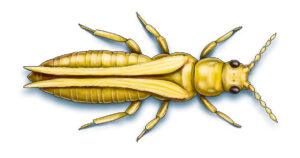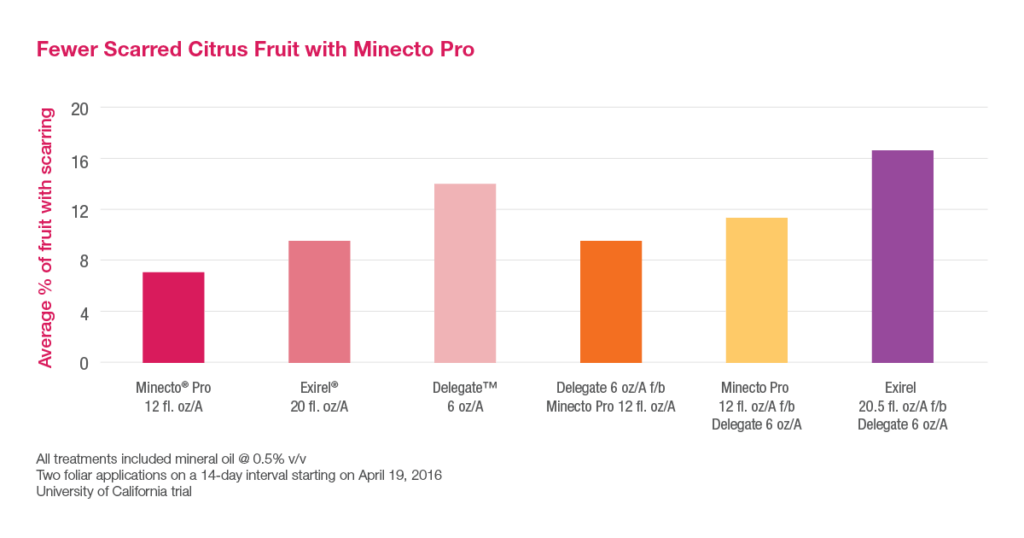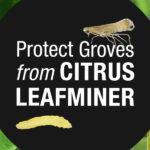Citrus Thrips: A Small but Mighty Pest Challenge in California
Early detection and proactive pest management is key to preserving fruit marketability and safeguarding yield potential.

Citrus thrips are tiny insects known for posing a significant threat to California citrus. They pack a powerful punch, causing significant damage to crops if left unchecked. Small, slender insects, citrus thrips typically measure about 0.6 to 0.88 millimeters in length. They are usually yellow to orange in color with fringed wings.

How Do Citrus Thrips Cause Damage?
Citrus thrips primarily feed on citrus leaves and fruit, puncturing epidermal cells to extract plant fluids and nutrients. Larvae tend to feed actively on tender leaves and under the sepals of young fruit, while adults feed more actively around the tree foliage.
This feeding behavior can make citrus fruit unmarketable by causing:
- Fruit scarring: Blemishes or scars on the outer rind of the fruit, rendering it unsuitable to be sold at market value.
- Leaf deformation: Infested leaves that become distorted or discolored, affecting the overall health and photosynthetic capacity of your citrus trees.
- Reduced fruit quality: Misshapen or smaller fruit that cause a reduction in market value.
Weather Challenges Contribute to Pest Problems
The University of California found that citrus thrips thrive during spring and summer. They can produce as many as eight generations in years with favorable weather conditions, as was evident during the prolonged wet and warm weather of the 2023 summer. These weather-related disruptions had a significant impact on the prevalence of citrus thrips during an already difficult year and underscore the importance of a strong early-season management plan.
Early detection of citrus thrips can help minimize destruction, but they can still cause immense damage to your yield if you are not careful. You never know what Mother Nature can bring, which is why proactive pest management is critical every season.
Proactive Citrus Thrip Management
To fight back against these tiny but mighty pests, you need an effective management solution that maintains the health and productivity of your citrus trees. In addition to regularly scouting your citrus trees for signs of thrips infestations, consider an effective insecticide with lasting residual control like Minecto® Pro to shield your trees from yield-robbing pests.

A broad-spectrum, foliar insecticide, Minecto Pro controls not only thrips, but also Asian citrus psyllid, citrus leafminer and mites. Minecto Pro helps protect your yield from pests by harnessing the power of two complementary active ingredients into one convenient premix formulation.
For the best results when applying an insecticide for citrus thrips, target the spray on the outside canopy of the tree as citrus thrips gravitate toward the sun.
Learn how you can reduce the risk of unmarketable fruit and safeguard your citrus yield with Minecto Pro. For additional information, reach out to your Syngenta representative.
3 Min Read
- Citrus thrips are tiny pests that can cause significant citrus crop damage.
- The insects’ feeding behavior may cause unmarketable fruit.
- An effective insecticide like Minecto® Pro has the potential to shield your trees from yield-robbing pests.























